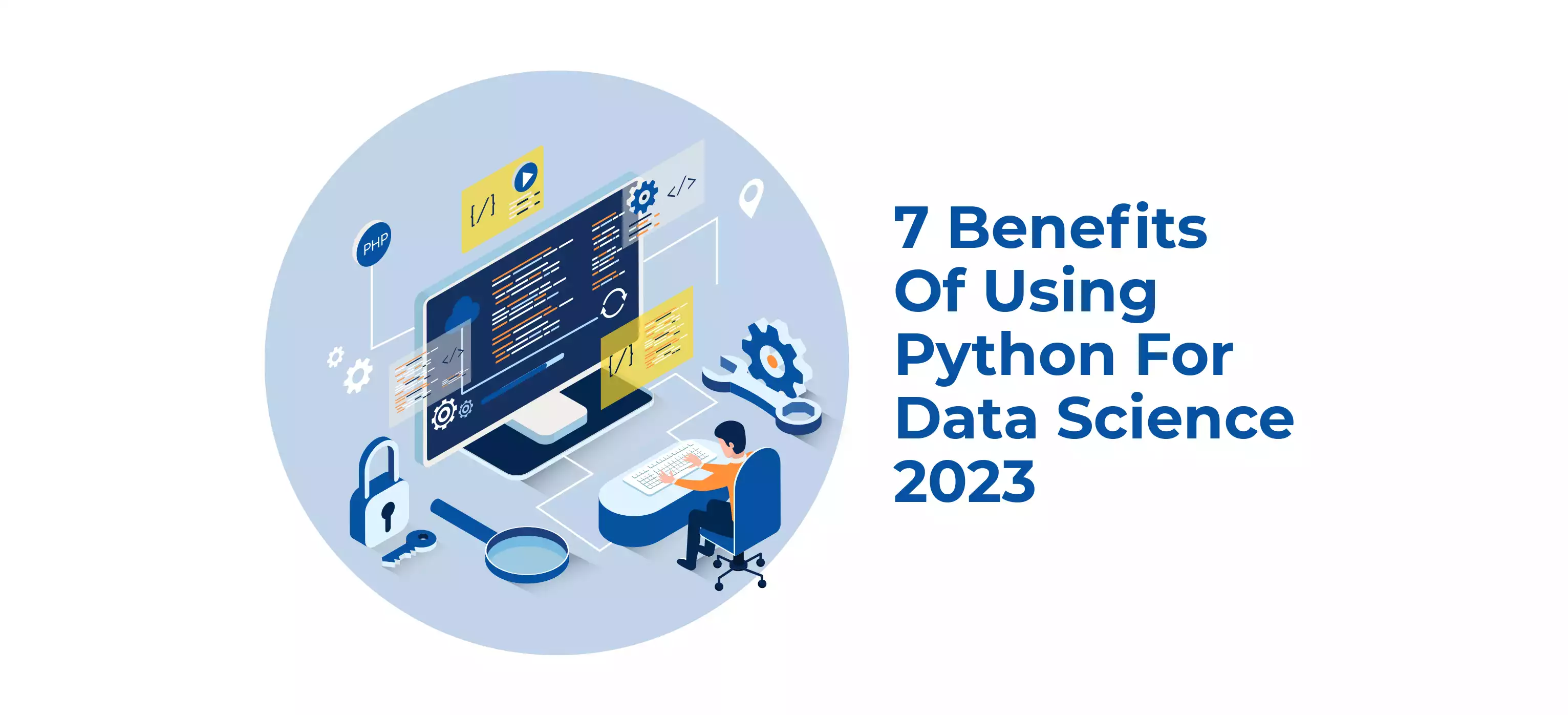 Usman Ahmad
Mar 28, 2025
Usman Ahmad
Mar 28, 2025

The insights that organizations of all sizes derive from their data are used today to monitor progress, make wise decisions and prepare for the future. The people who organize and process data using scientific procedures, algorithms, and other approaches are known as data scientists.
With the development of machine learning, artificial intelligence, and predictive analytics, Data science is becoming a popular job option. While knowing multiple programming languages is advantageous. A prospective data scientist must study at least one programming language. R, MATLAB, Python, Java, and Scala are some of the popular programming languages.
We will examine the key reasons why learning the python programming language is essential for anyone wishing to advance their skills or who wants to pursue a job in data analysis today.
Also Check Out: Why Python is the Most Preferred Language?
There is a misconception that Data Science and Data analytics are similar and their professionals perform the same activities in a company. However, these two data-related fields are different. Data science is an umbrella term for a variety of fields that use large datasets to mine information. Data analytics software is a more focused version of this, and it can even be considered a component of the overall process.
Refer for More Information: Steps to Use Tableau for Data Science
Data Analytics is dedicated to generating actionable insights that can be applied right away based on existing queries. To put it another way, data analysts deal with the day-to-day, using data to answer questions, whereas data scientists try to predict the future and frame those predictions in new questions.
You May Also Interested to Read: Best Data Analytics Tools
Python is one of the top data science tools used across sectors and is the most popular programming language for the daily chores that data scientists handle. The following are some of the benefits of using python for Data Science;
Python's most enticing feature is that anyone who wants to learn it can do it fast and simply, even if they are a beginner. This is one of the reasons why students use python for data science. Python has a far shorter learning curve than any other language and is simple to master. Python's simplicity makes it possible for data scientists to quickly become productive on data science initiatives.
Read More: Tips to Learn Python Language Easily
Python allows an individual to build a script on their laptop or enables 10-15 people to work together on a project. Python can be used by hundreds or even thousands of individuals engaged in a challenging project. Compared to other languages used for data science or elsewhere, Python is by far the most scalable. Additionally, it is quicker than Stata and Matlab. Python is ideal for you if you want to do something creative that has never been done before.
Python offers numerous methods for visualization. It contains many excellent tools for producing simple graphics, like the straightforward Matplotlib and its two offspring Pandas and seaborn (both built on Matplotlib). The battle is half won if you can quickly create a solid viz to explain or demonstrate the facts and this is a simple process using Python. The visualization tools make it easier to interpret data and produce charts, graphical plots, and interactive web plots.
Python's data science libraries have proliferated in recent years, boosting both its popularity and applicability for analytics. There is a wide range of Python libraries and frameworks that concentrate on tasks linked to data science. In the data science communities, libraries like Pandas, Statsmodels, NumPy, SciPy, and Scikit-Learn are particularly well-liked. Python's data science libraries are strong and comprehensive, and they currently cover almost every math operation.
Python provides the best and most straightforward support for machine learning. Python is a very helpful programming language for implementing algorithms since it makes "doing the math" - probability, statistics, and optimizations - simple. Python is frequently used by academics and researchers to create simulations and predictive models that unearth new data in their sets. Python machine learning training can help you build algorithms with practical hands-on exercises and give you a head start in your career.
Also Read: How to Perform Machine Learning in Python?
One of the reasons Python is so well-known is because of its community. The community is close-knit, and finding a solution to a difficult problem has never been easier. Python is such a great choice for data science that communities like the ones that have sprung up around it make it easier to learn by sharing their tips, answering questions, correcting code, and discussing new ideas.
Programs created in other programming languages can easily integrate Python. Thus, it makes the process of developing a website easier by enabling simple integration with other languages. Furthermore, Python's strong text processing and integration capabilities make it a valuable tool for software testing.
Also Read: Role of Python in Artificial Intelligence
Python is a very popular language for data science for all of these good reasons and more. It’s versatile, dynamic, and pretty easy to learn. Yet it’s a language that is robust enough to solve problems in math, statistics, and more. You can start building your career in python today by joining a python training course today. You not only have a solid skill at your disposal, but you can also acquire a high-paying job in the field.

Usman Ahmad is a Data Analyst Trainer with 16 years of training experience. He specialises in programming, databases, and data analytics. Usman possesses a range of certifications including PowerBI Data Analyst Associate, Azure Data Scientist Associate, Fabrics Analytics Engineer, and Office Specialist Expert 2019 Trainer. Additionally, he also holds an M.Sc. in Computer Science.
Usman Ahmad has trained over 3,000 professionals in data analytics and technology. As the Head of the Department at the School of Computer Science and an M.Sc. thesis supervisor, he brings academic excellence and practical industry knowledge to the classroom. A Microsoft Certified Trainer, Usman integrates theoretical information with practical applications to produce effective learning outcomes.